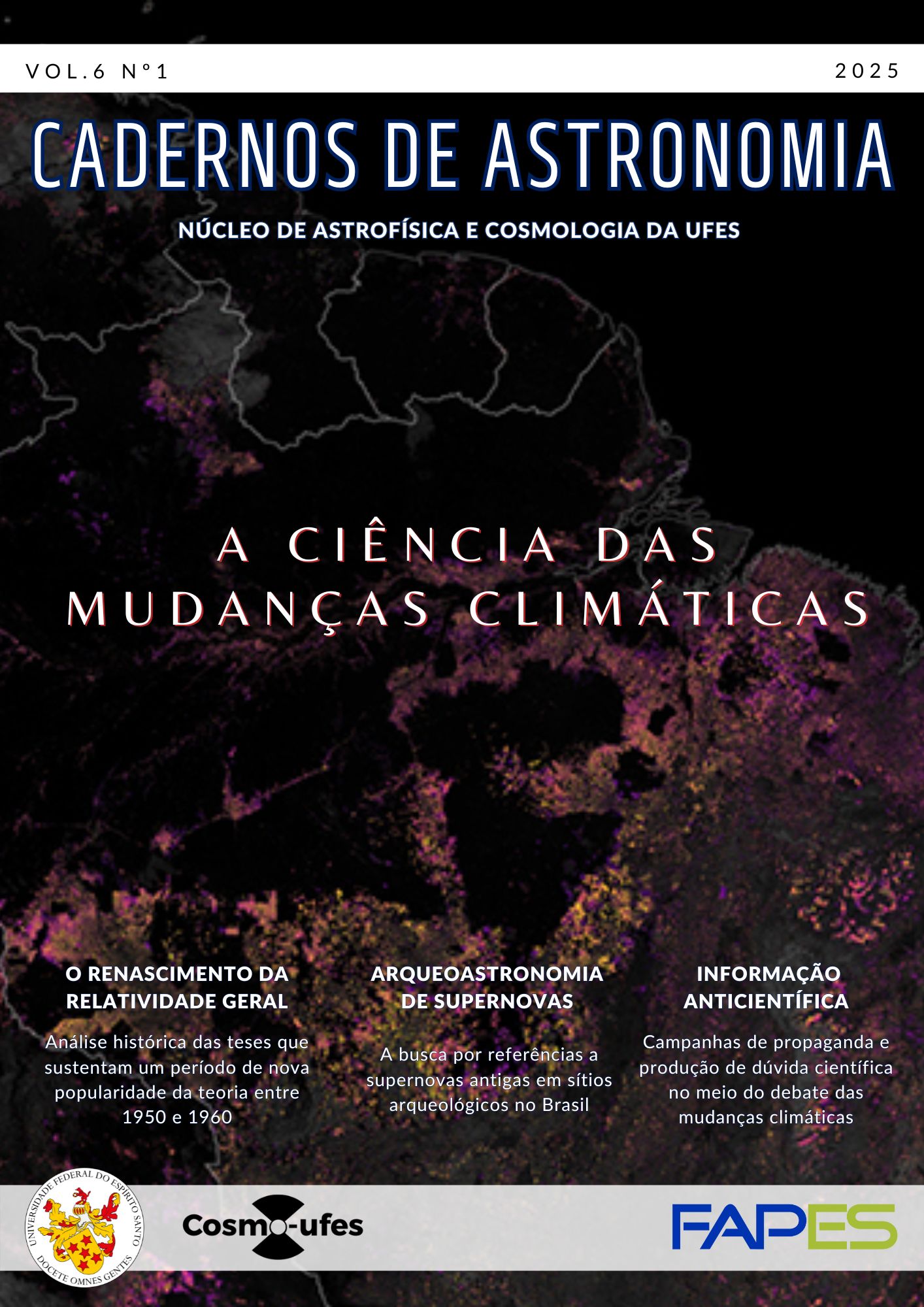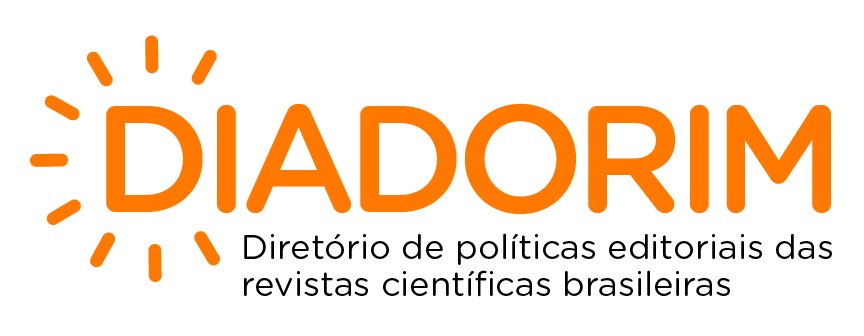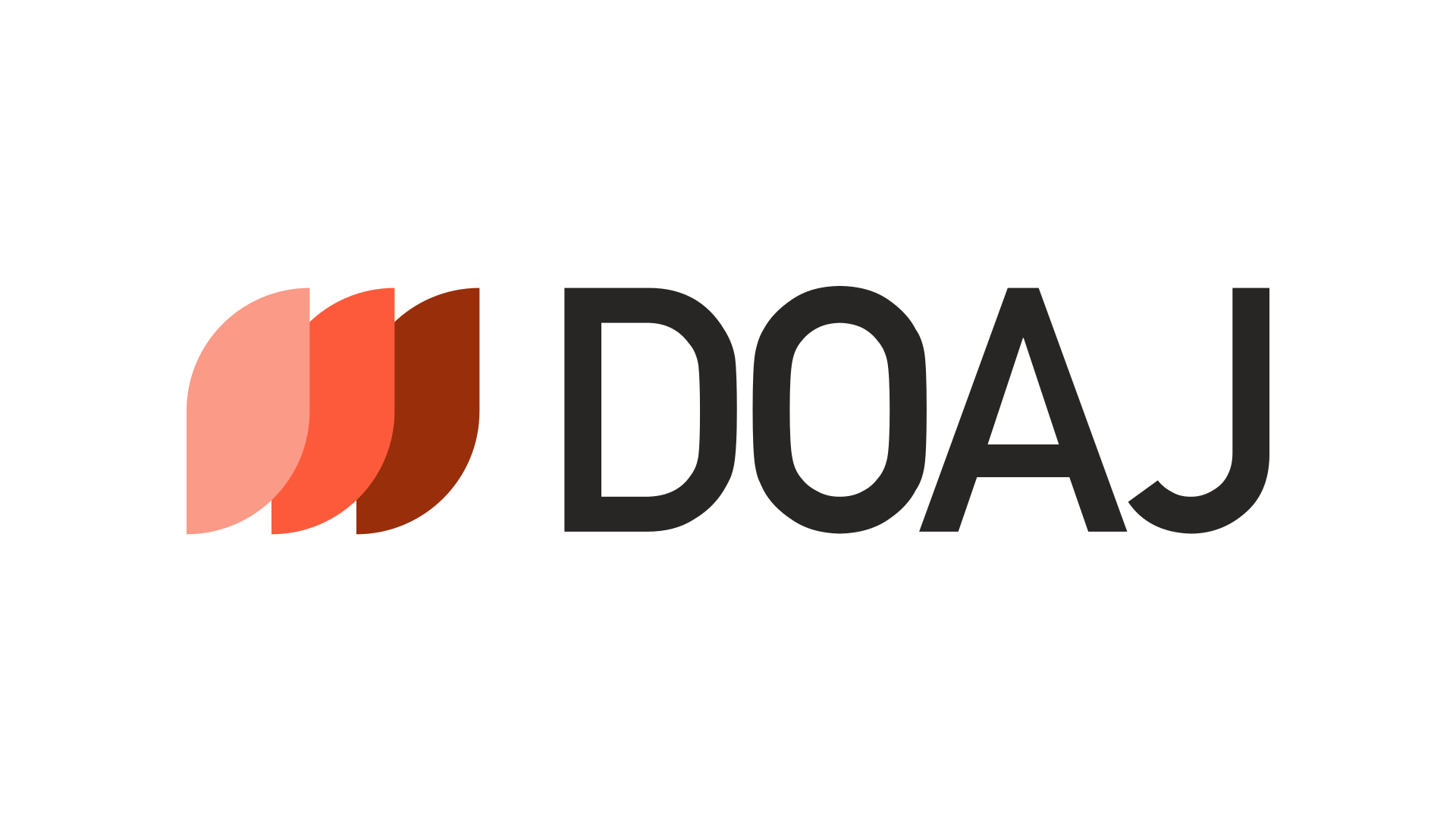From gravity to water: analyzing climate change in Brazil with computational methods
DOI:
https://doi.org/10.47456/Cad.Astro.v6n1.47311Keywords:
Climate, GRACE, gravity, Brazil, water, FFT, SVD, DBSCANAbstract
Predicting droughts and floods in climatically dynamic regions requires rigorous analyses that integrate both spatial and temporal information. This study leverages gravitational data from the GRACE missions to examine hydrological variability in Brazil, an area of strategic importance due to its extensive river network and high sensitivity to global climate phenomena such as El Niño and the Pacific Decadal Oscillation. By adopting a computational framework that includes Singular Value Decomposition (SVD), CFAR (peak detection), and DBSCAN (spatial clustering), key variability patterns are identified and highlight regions with elevated hydrological vulnerability, notably Manaus, Mato Grosso, and Minas Gerais.
References
[1] C. Mitchell, Flood Resilience—A Time for Cathedral-Based Thinking and Action!, Journal of Flood Risk Management 15(1), e12780 (2022).
[2] M. I. Brunner et al., Challenges in Modeling and Predicting Floods and Droughts: A Review, WIREs Water 8(3), e1520 (2021).
[3] J. A. Marengo e J. C. Espinoza, Extreme Seasonal Droughts and Floods in Amazonia: Causes, Trends and Impacts, International Journal of Climatology 36(3), 1033 (2016).
[4] J. A. Marengo et al., The Drought of Amazonia in 2023-2024, American Journal of Climate Change 13(03), 567 (2024).
[5] J. Wise, Spanish Floods: Experts Call for Clearer Warnings, BMJ 387, q2421 (2024).
[6] H. X. Do, Y. Mei e A. D. Gronewold, To What Extent Are Changes in Flood Magnitude Related to Changes in Precipitation Extremes?, Geophysical Research Letters 47(18), e2020GL088684 (2020).
[7] Gravity Recovery and Climate Experiment (GRACE), Physical Oceanography Distributed Active Archive Center (2020). Disponível em https://podaac.jpl.nasa.gov/GRACE, acesso em out. 2024.
[8] C. Dahle et al., GRACE 327-743 (Gravity Recovery and Climate Experiment): GFZ Level-2 Processing Standards Document for Level-2 Product Release 06 (Rev. 1.0, October 26, 2018), Scientific Technical Report STR - Data (GFZ German Research Centre for Geosciences, Potsdam, 2018).
[9] GRACE Documentation, Physical Oceanography Distributed Active Archive Center (PO.DAAC) (2011). Disponível em https://podaac.jpl.nasa.gov/gravity/grace-documentation, acesso em out. 2024. [10] I. Velicogna, T. C. Sutterley e M. R. van den Broeke, Regional Acceleration in Ice Mass Loss from Greenland and Antarc- tica Using GRACE Time-Variable Gravity Data, Geophysical Research Letters 41(22), 8130 (2014).
[11] V. M. Tiwari, J. Wahr e S. Swenson, Dwindling Groundwater Resources in Northern India, from Satellite Gravity Observations, Geophysical Research Letters 36(18) (2009).
[12] Gravity Data Sheds New Light on Ocean, Climate, Climate Change: Vital Signs of the Planet. Disponível em https://climate.nasa.gov/news/152/gravity-data-sheds-new-light-on-ocean-climate, acesso em out. 2024.
[13] M. Rodell e J. T. Reager, Water Cycle Science Enabled by the GRACE and GRACE-FO Satellite Missions, Nature Water 1(1), 47 (2023).
[14] S. S. Soltani, B. Ataie-Ashtiani e C. T. Simmons, Review of Assimilating GRACE Terrestrial Water Storage Data into Hydrological Models: Advances, Challenges and Opportunities, Earth-Science Reviews 213, 103487 (2021).
[15] Z. Sun et al., Reconstruction of GRACE Data on Changes in Total Water Storage Over the Global Land Surface and 60 Basins, Water Resources Research 56(4), e2019WR026250 (2020).
[16] B. Lehner, K. Verdin e A. Jarvis, New Global Hydrography Derived From Spaceborne Elevation Data, Eos, Transactions American Geophysical Union 89(10), 93 (2008).
[17] B. Lehner e G. Grill, Global River Hydrography and Network Routing: Baseline Data and New Approaches to Study the World’s Large River Systems, Hydrological Processes 27(15), 2171 (2013).
[18] B. D. Tapley et al., Contributions of GRACE to Understanding Climate Change, Nature Climate Change 9(5), 358 (2019). [19] Lasers in Space: Earth Mission Tests New Technology, NASA Sea Level Change Portal. Disponível em https://sealevel.nasa.gov/news/121/lasers-in-space-earth-mission-tests-new-technology, acesso em out. 2024.
[20] F. W. Landerer et al., Extending the Global Mass Change Data Record: GRACE Follow-On Instrument and Science Data Performance, Geophysical Research Letters 47(12), e2020GL088306 (2020).
[21] GRACE-FO Level-2 Monthly Geopotential Spherical Harmonics CSR Release 06.2 (RL06.2), Physical Oceanography Distributed Active Archive Center (PO.DAAC). Disponível em https://podaac.jpl.nasa.gov/dataset/, acesso em out. 2024.
[22] F. W. Landerer e S. C. Swenson, Accuracy of Scaled GRACE Terrestrial Water Storage Estimates, Water Resources Research 48(4) (2012).
[23] Images Taken by the GRACE Mission, Photojournal - JPL/NASA. Disponível em https://photojournal.jpl.nasa.gov/mission/GRACE, acesso em out. 2024.
[24] M. Turk e A. Pentland, Eigenfaces for Recognition, Journal of Cognitive Neuroscience 3(1), 71 (1991).
[25] Principle Component Analysis - Eigen-faces, Kaggle. Disponível em https:// kaggle.com/code/ritupande/principle- component-analysis-eigenfaces, acesso em out. 2024.
[26] R. A. Azdy e F. Darnis, Use of Haversine Formula in Finding Distance Between Temporary Shelter and Waste End Processing Sites, Journal of Physics: Conference Series 1500(1), 012104 (2020).
[27] F. Trigo, Fbientrigo/Gravcon-Grace: A Project for the Estimation of Water Flow Based on the GRACE Dataset, GitHub. Disponível em https://github.com/fbientrigo/gravcon-grace, acesso em out. 2024.
[28] Podaac/Data-Subscriber, Physical Oceanography Distributed Active Archive Center (PO.DAAC) (2024). Disponível em https://podaac.jpl.nasa.gov/node/1647, acesso em out. 2024.
[29] T. Sutterley, Tsutterley/Gravity-Toolkit: V1.2.1, Zenodo (2023).
[30] SciTools/Cartopy, SciTools (2024). Disponível em https://scitools.org.uk/cartopy/docs/latest/, acesso em out. 2024.
[31] G. Brakenridge, DFO - Flood Observatory, Global Active Archive of Large Flood Events. Disponível em https://floodobservatory.colorado.edu/index.html, acesso em out. 2024.
Downloads
Published
Issue
Section
License
Copyright (c) 2025 Fabian Trigo

This work is licensed under a Creative Commons Attribution 4.0 International License.






